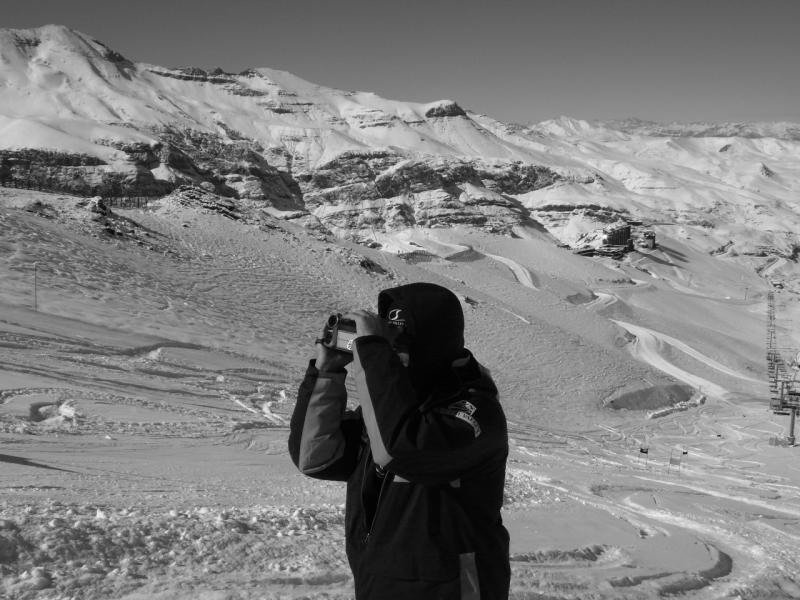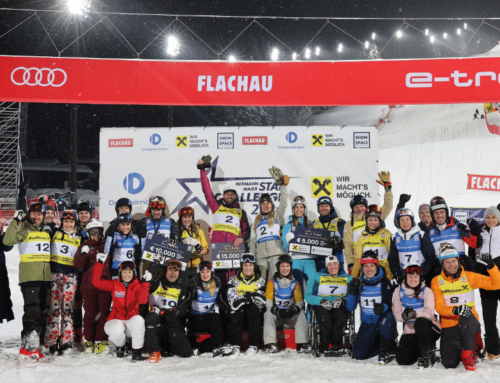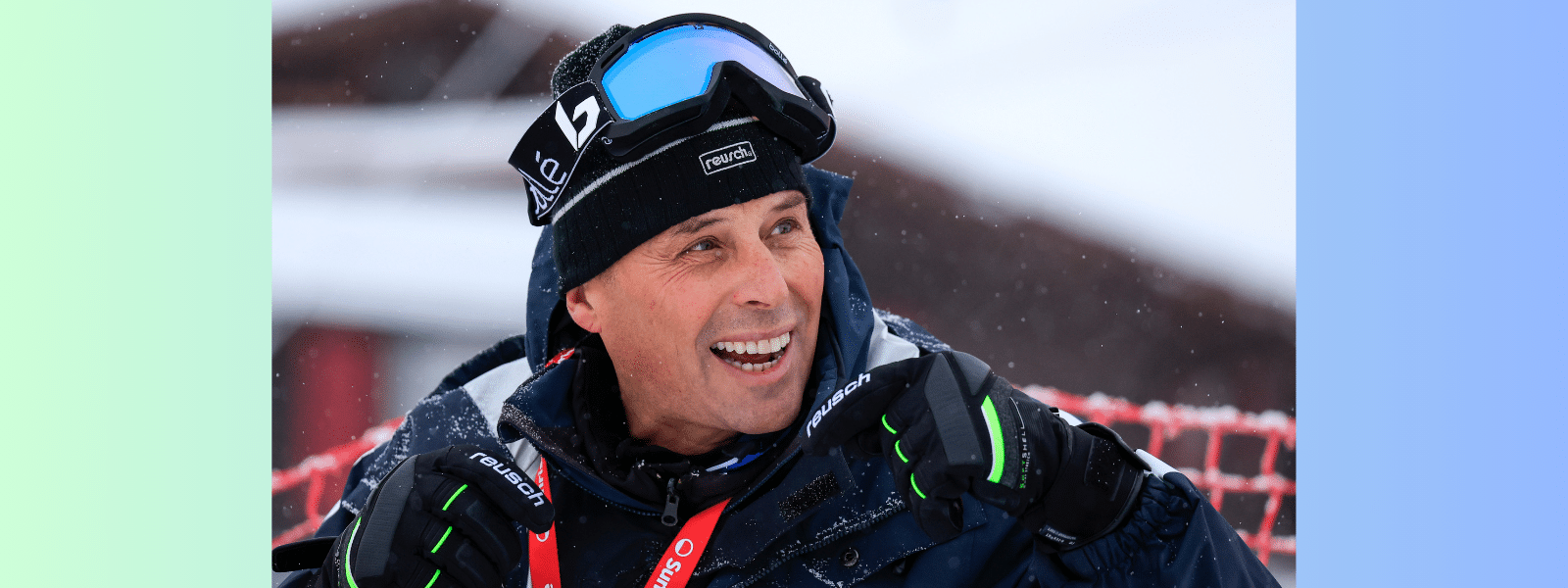Video Skilled the Ski Racing Star
How to shoot and review athletes on film for faster speeds
What’s the most effective and most affirming piece of technology on the race hill? Other than a good, old-fashioned clock, it’s a camera. But this coaching art has come a long way since Olle Larson and Dave Galusha were boot-packing around “H” gates with an 8-millimeter. You could go as far to say we’ve already eclipsed the 21st century, because back then, a standard HD camera cost more than $1,000. It’s almost 2015, people, a time when media has become more accessible than a Subaru in a ski area parking lot. Those on the hill a lot are aware that video trends are much like Ted Ligety buzz words (“inside half,” “taking it deep” and, now, “waist steering”!). We hear words like Dartfish, Sprongo, and Coaches Eye on a daily basis. Then there are those of us, weekend coaches, perhaps, who are still scratching our heads over how to catch up with the latest technology. Either way, here are some considerations that should provide insight on what methods might best suit your team.
Software Continuity
This is the biggest hurdle that many coaches face, now that everything’s digital. (If you disagree, you’re probably still using that 8 mm camera you bought second hand from Olle, or your tech guru is Robin Cressy.) Panasonic and JVC seem to work best with Apple computers, because you can plug the SD card right into your reader and view all files using QuickTime. If you’re using a Canon or a Sony, the best conversion software available is VLC. For PC users, Canon and Sony will work just fine with your computer’s standard software. This is also important for storing and labeling the video files later on. Dial in your software from the start, or you’ll hit a wall that will prevent you from executing the end goal — actually watching and analyzing the video.  Credit: Resi Stiegler
Credit: Resi Stiegler
Getting Started
For a large weekend program, having each racer’s runs stored and organized on video is less vital, since their development is primarily focused on basic fundamentals and having fun. If your skiers are sitting inside watching video for long amounts of time, you risk losing their attention and, even more importantly, take away from the time they could be out skiing and gaining critical mileage. Around age 8, the beginning stage of true motor skills development for many children, is a good benchmark at which to begin providing some kind of video feedback on a fairly regular basis — say, twice a week. A basic camera runs around $100 to $300, complete with the basic cords necessary to connect to a television for playback. This is about all you’ll need to start. Film only a couple runs, at most, and be sure to announce the name of the athlete you are shooting during the recording to avoid confusion later on. Your team’s lunch break is a great time to watch the footage with minimal rewinding. Let the kids see themselves, what they are doing, and how it relates to their focus. Hopefully your club has acquired a TV, maybe an old one donated by a parent. If you want to take your club’s video offering up a notch, Sprongo.com is a great tool for larger clubs. It does include a set fee determined by your program, which in turn receives a kick back. Sprongo allows each athlete to watch footage on the Internet from home, watch teammates, and even share the video with Grandma living in another state. During the past few years, Sprongo has also become a social network for ski training and racing video. The software, meanwhile, also includes the tools and features for more technical analysis.
Getting Serious
For older athletes — U14s and up — video becomes a much more critical tool and should be used on a daily basis. Why? Since skiing is a sport of feeling, visual affirmation fosters both skill acquisition and retention. At this point in development, athletes are at an age where they’re building stronger motor skills and better body awareness. Maintain smaller groups. This will give racers more individual attention so that they can better see themselves, what they’re doing, and how it relates to their focus. Consider using a tablet with an SD card reader or adapter. Apps such as Ubersense, Coaches Eye, Dartfish Express, and Speed Up TV cost $3 to $8, and the tablet can be hooked up to a television with a HDMI cord and converter. This will allow you to slow down video to super-low speeds, create side-by-side frames, and even use footage available on the Internet as a reference. Stay organized by labeling the files on a computer, and encourage your athletes to have their own external hard drive to store their own video. Create a strong organizational system that’s clear and easy for the athletes and staff to search. Seek out footage of better racers either through filming the top seed at your club, races you attend, local FIS races, national teams training at the same summer camp venue; or through connections with coaches at higher levels. This will serve as a real-time reference for your athletes to use when studying their own video. (Keep in mind that the camera angles from World Cup footage can often be misleading to an athlete.) Some extra footage may also cost extra — but nowhere near the extent of a new bundle of 20 SPM brush gates. 
Next Steps
Older elite teams are in the most need for high-end video resources. Dartfish has become the most popular in ski racing due to its intuition and ability to overlay the bells and whistles needed at the Continental or World Cup level. The U.S. Ski Team’s coaches have the official Dartfish software loaded on their computers. The downside? Dartfish costs between $600 and $1,000, and only works in Windows or Mac Leopard operating systems. Also used widely at this level are WiFi SD cards, which can upload to another viewing device as you film. This works well if you’re interested in watching video on the hill via a tablet and are in a spot that has wireless available on the training slopes, such as Sugarbush or Vail. Remember that the investment pay off is only effective in small group sessions where the coach and athlete have ample time to dissect and analyze.
The Bottom Line and the Finish Line
Finally, look around for better viewing spots near your training venue: put a screen in the timing building at the bottom of the race hill or in the start house. Or, use a smaller, less crowded room in the training building for video review. But remember that at the end of the day, all you really need is a camera and a place to watch what you record. Keep it simple at the development level. All your athletes need is to see themselves, what they are doing, and how it relates to their focus. Being able to watch what they are feeling is the biggest affirmation to solidifying their progress — and don’t forget to use examples that clearly identify where they need to go.





















